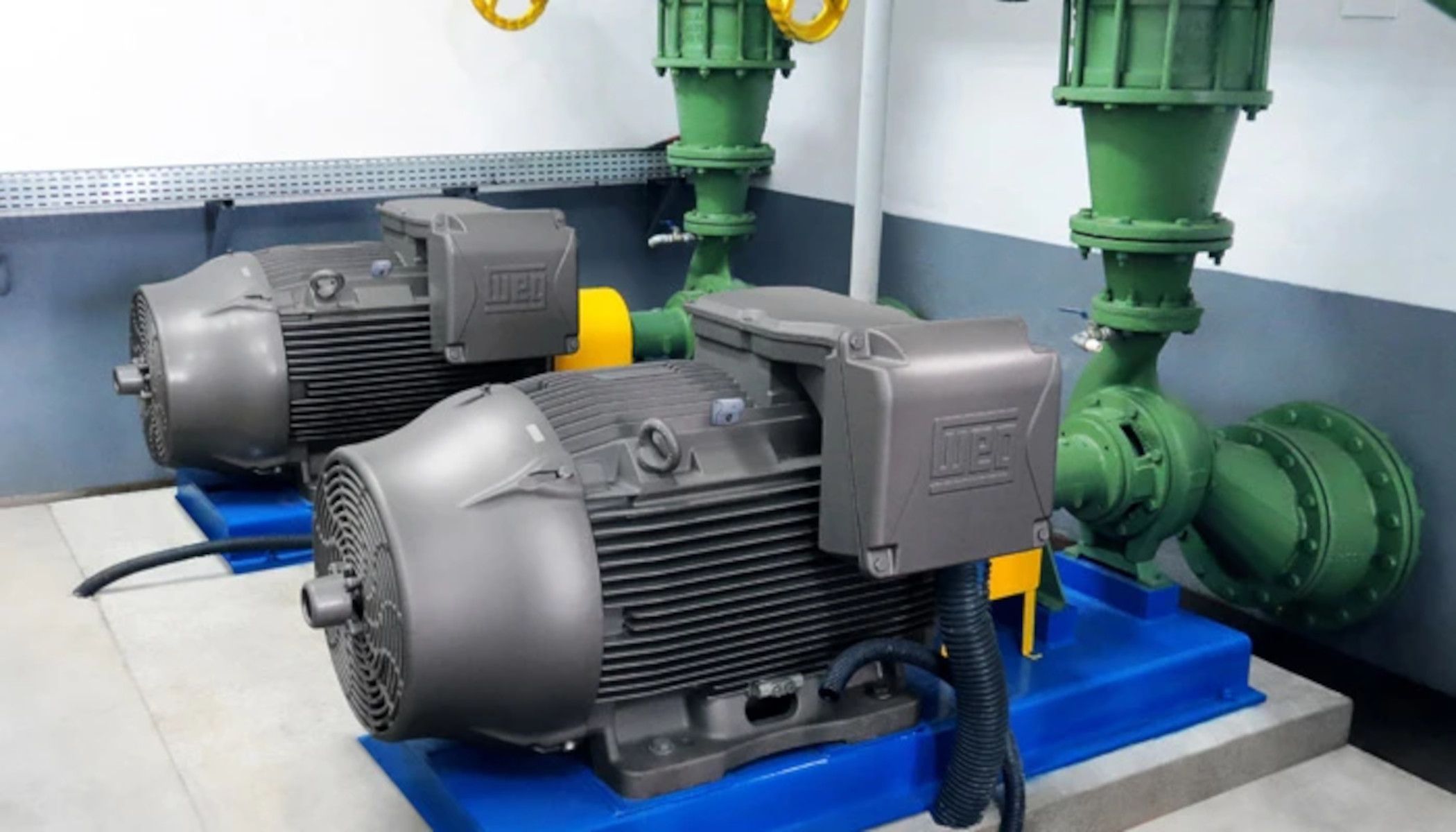Manufacturers and end users of motors and drives need to get onboard with ambitious zero emission targets pledged by governments around the world. But, it’s estimated that nearly half of the world’s energy is consumed by electric motors. Here, Marek Lukaszczyk, European and Middle East marketing manager at global motors and drives manufacturer WEG explains why choosing the right motors and drives can be integral to environmental compliance and driving plant efficiency.
Electric motors contribute directly to a plant’s overall sustainability. Yet, at the same time, electric motors and electric motor-driven systems are estimated to consume almost 50 per cent of all global electricity consumption, according to the World Energy Council. That includes 70 per cent of electricity consumption in industry.
These figures may seem discouraging. But, actually, it is possible to greatly improve these systems’ overall equipment effectiveness (OEE), and therefore their overall impact on sustainability and the bottom line, by choosing the right motors for a given application.
For instance, the service life of a motor can be extended by gradually accelerating it from a standstill using a variable speed drive (VSD) or soft starter. This avoids starting the motor instantly, which invites large and costly surges in electrical current that are highly detrimental to the motor’s longevity, and reduces mechanical stress.
Supporting energy efficiency
Today, drives are most commonly used in industrial environments to control fans, pumps and compressors ꟷ in fact, these applications account for about 75 per cent of all drives operating globally.
Compressors are abundant in powering processes and machines used to blow and transfer products around a factory, be it foods, pharmaceuticals or plastics. Pumps are used in many processes including water supply systems, chemical manufacturing, food and beverage applications. Lastly, fans and air-handling equipment are used across all industrial and domestic applications, and consume larges amounts of energy.
VSDs can support energy efficiency in all of these applications, and other forms of motor equipment, through reduced electricity consumption, less mechanical wear and reduced maintenance.
For example, when WEG’s customer Lontra developed a world-first compressor, or industrial blower, based on a car internal combustion engine, it chose to power its innovation with a WEG IE5 ultra-premium liquid cooled magnet motor, chosen for its high efficiency and because it generates less heat in the rotor. In Lontra’s new machine, the motor gave 34 per cent efficiency savings against competing units.
New regulations
Drives and motors will be required to meet even higher efficiency levels in 2023. This is due to the tightening of 2019/1781 regulation affecting the different international efficiency (IE) classes new products must meet. Nevertheless, these regulations will ultimately guide manufacturers in the right direction on their route to net zero. The classes indicate how energy efficient a motor or drive is ꟷ including IE2 for high efficiency, IE3 for premium efficiency, IE4 for super premium efficiency and IE5 for ultra-premium.
In 2023, as part of the 2019/1781 regulation, motors new to the European market with a rated output between 75 kW and 200 kW will be required to achieve IE4 for the first time. 0.12 kW and 1000 kW increased safety “Ex eb” motors will be required to meet IE2 efficiency levels; as will all single-phase motors with 0.12 kW power output and above, as a minimum.
Premium efficiency motors (PEMs), which meet the IE3 rating, are designed for optimum efficiency by minimising and balancing losses created in the stator coils, the magnetising stator iron and within the rotor by slip. However, the PEM’s design — including higher slot fills in the copper winding, thinner laminations with improved steel properties, a better cooling fan design and special and improved bearings — all adds-up to higher efficiency.
According to WEG’s own findings, energy savings of between 2.1 and 12.4 per cent are possible by converting from a standard IE2 efficiency motor to premium IE3 efficiency.
Energy savings
WEG already offers a range of safe area motors for industrial applications that are rated at IE4 and offer significant energy savings. They include its unique W22 Permanent Magnet (W22 Magnet) electric motors.
For instance, when WEG customer Orleplast, one of the largest packaging and disposable plastic manufacturers based in Brazil, wished to support better efficiency and greener operations at its manufacturing site in Santa Catarina, it chose the W22 Magnet motor. The W22 Magnet motor is equipped with a permanent magnet, which lowers the temperature of the motor and ensures the torque — and therefore the motor’s productivity — remains constant, even at low speeds. This significantly reduces electric losses and, therefore, motor temperature.
Using several W22 Magnet motors at 300 and 350 horsepower, plus a WEG CFW11 VSD to further improve their energy efficiency, Orleplast reported energy savings of 286,416 kWh/year ꟷ enough to supply 85 homes for one year! The plastics manufacturer also achieved a return on investment (ROI) of just 2.7 years.
Energy makes up a significant portion of the total cost of a motor throughout its lifecycle. Investing in a more efficient motor or drive is therefore the more cost-effective option, and can help manufacturers and end users get on the route to Net Zero.
For more information on how motors and drives can support your plant’s sustainability objectives, visit the WEG website.



